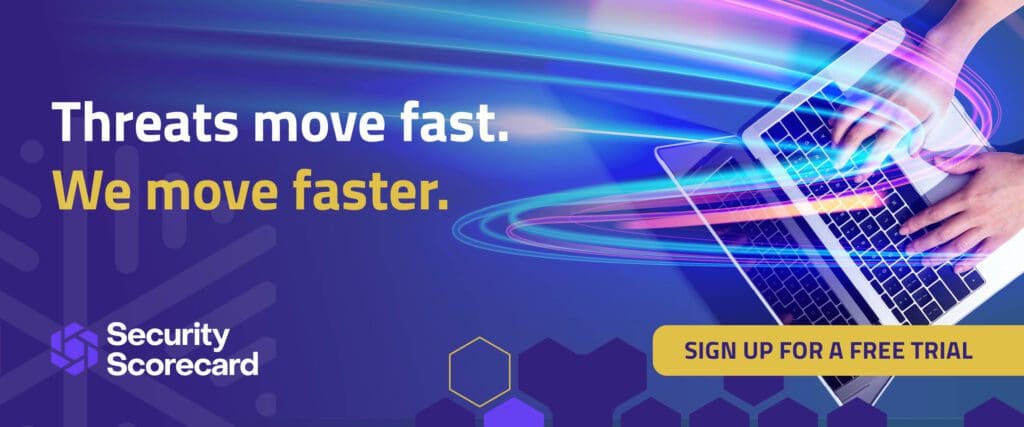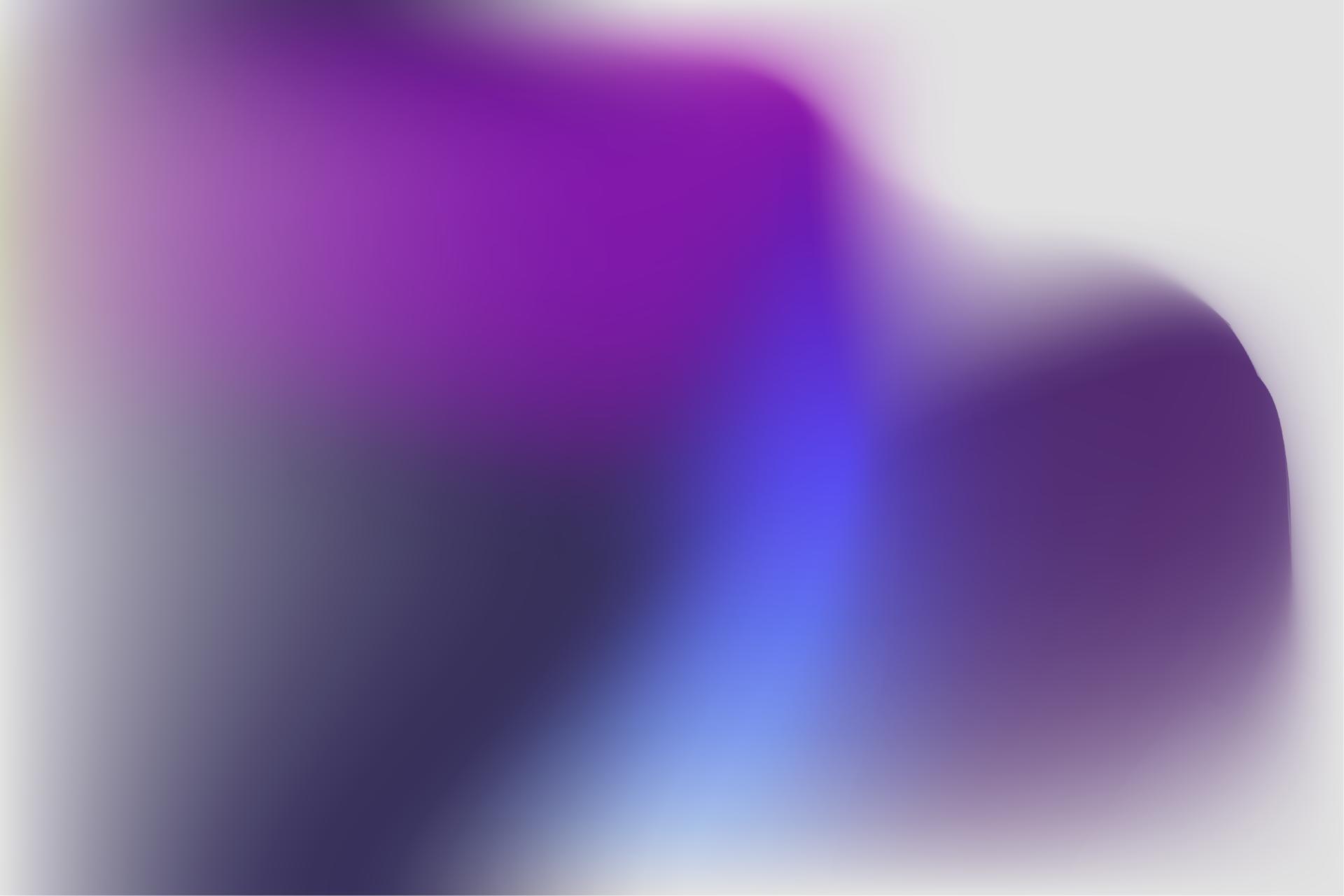2025 Guide to Completing a Vendor Risk Management Questionnaire
-
May 8, 2025What Is a Supply Chain Attack?
-
May 8, 2025Safeguarding Against Subdomain Takeover
-
May 8, 2025Guide to Developing a Business Continuity Plan
-
May 6, 2025Assembling the Dream Team: Building a High-Performing Supply Chain Incident Response Team
-
May 5, 2025Scorecarder Spotlight: Chandra Sekhar Betha
Vendor risk management is increasingly crucial in 2025 as enterprises integrate more cloud-based solutions into their IT ecosystems. With this shift comes greater compliance risks, making the verification of vendors’ security controls and regular security audits essential.
Understanding and managing these risks effectively requires ongoing communication with third—and fourth-party vendors. Utilizing a vendor risk management questionnaire is key. It allows businesses to systematically assess third-party risks and ensure alignment with their own security and compliance standards. This proactive approach is essential for navigating the complex and evolving threats in today’s interconnected IT landscapes.
What is a vendor risk management questionnaire?
A vendor risk management questionnaire, often referred to as a vendor risk management template or vendor risk assessment questionnaire, serves as a critical tool for organizations in 2025 to identify and assess potential threats and vulnerabilities in their vendor network. This tool is essential for evaluating not only direct third-party vendors but also the less visible fourth-party vendors – entities that your third-party vendors may interact with. In the current business environment, where supply chains and vendor networks are increasingly complex and interconnected, these questionnaires have become integral to maintaining robust cybersecurity and operational resilience.
The questionnaire typically covers a range of risk areas, including cybersecurity practices, compliance with data protection regulations, financial stability, and operational reliability. It allows organizations to gain a comprehensive understanding of the risk profile of each vendor, including those in the extended supply chain. With evolving industry standards like GDPR and DORA and increasing cybersecurity threats, these questionnaires have been updated to include more in-depth inquiries into vendors’ data handling practices and their preparedness for cyber attacks.
By thoroughly evaluating both third and fourth-party vendors, organizations can preemptively address risks that might otherwise go unnoticed, ensuring that every link in their supply chain meets their security and compliance standards. This proactive approach is vital for mitigating potential impact and safeguarding against cascading risks in today’s highly interconnected business ecosystems.
Why is a vendor risk management questionnaire important?
The significance of a vendor risk management questionnaire is paramount, particularly due to the intricate risks involved in working with third-party vendors. These risks include information security, compliance, and reputational risks. A vendor’s vulnerabilities can easily become an organization’s own, making the identification and assessment of these risks critical. The questionnaire helps in pinpointing threats related to third and fourth-party vendors and evaluating their level of risk.
In an era marked by heightened data privacy concerns and increased cyberattack sophistication, not utilizing such a questionnaire could expose organizations to data breaches and other cyber threats. It enables businesses to systematically assess vendors’ cybersecurity measures and compliance with regulations like GDPR, thus prioritizing risk management and ensuring protection against the vulnerabilities in their extended supply chain. This tool is essential for maintaining up-to-date risk profiles and fortifying an organization’s defenses in the interconnected business ecosystem of 2025.
What are the challenges of a vendor risk assessment questionnaire?
Vendor risk assessment questionnaires face challenges due to the rapidly evolving nature of cybersecurity. These questionnaires provide only a momentary snapshot of a vendor’s risk profile, which can quickly become outdated in a fast-changing technological environment. This poses a challenge in accurately capturing ongoing risks.
Another significant challenge is the labor-intensive process of implementing these questionnaires, particularly for organizations with numerous critical vendors. It requires substantial effort to develop, distribute, and analyze them, demanding dedicated resources and expertise. Additionally, keeping teams updated on the evolving nature of vendor risks and the implications of new technologies and cybersecurity threats is a continuous and demanding task. The complexity of digital supply chains further complicates risk assessment, necessitating a broader approach that goes beyond traditional questionnaires to include continuous monitoring and adaptive risk management.
How to conduct a vendor risk management questionnaire
Conducting a vendor risk management questionnaire in 2025 involves a structured approach to address the complexities of modern cybersecurity. This vendor risk assessment process typically involves four key steps:
- Step 1: Identify cybersecurity risks – Start by pinpointing potential cybersecurity risks associated with each vendor, including data breaches and compliance issues. Given the sophisticated nature of modern cyber threats, this step is crucial for risk reduction.
- Step 2: Identify key technical controls – Assess the vendor’s technical safeguards, such as encryption and intrusion detection systems. Ensure these controls are current and robust, in line with today’s technological advancements and industry standards.
- Step 3: Identify key process controls – Evaluate the vendor’s process controls, including data handling policies and incident response procedures. In the dynamic threat environment of 2025, vendors need agile and comprehensive processes that align with business objectives.
- Step 4: Identify key “people” controls – Focus on the human aspect of the vendor’s cybersecurity measures. This includes staff training, access control policies, and awareness of social engineering threats.
After completing these steps, review and analyze the responses to understand each vendor’s risk profile and develop appropriate risk mitigation strategies. Regular reassessment is recommended to maintain effective vendor risk management in the face of evolving cybersecurity challenges.
Step 1: Identify the cybersecurity risks
Identifying cybersecurity risks as the first step in creating an effective vendor risk management questionnaire has become more critical than ever.
The process involves a comprehensive analysis similar to an organization’s internal risk assessment. Given the increasing sophistication of cyber threats and the complex regulatory landscape, this step focuses on checking that your vendors have appropriate controls in place to protect non-public personally identifiable information (PII) that you share with them.
This risk identification should encompass a wide range of potential threats, including emerging cyber threats like ransomware attacks, data breaches, and phishing schemes. Additionally, with the growing emphasis on data privacy regulations, such as GDPR and CCPA, it’s crucial to assess how vendors comply with these regulations in handling PII.
In 2025, this also means considering new technology trends and practices, such as cloud storage, remote work models, and the use of AI and ML in data processing. By thoroughly identifying and understanding these risks, you can tailor your questionnaire to address specific concerns relevant to the current cybersecurity environment and ensure that your vendors have robust measures in place to protect sensitive information.
| Risk Type | Question | Yes/No/Other | Comment |
| Data | Do you collect, store, or transmit personally identifiable information (PII)? | ||
| Data | Do you limit your PII collection and storage? | ||
| Location | Do you store PII in an on-premises location? | ||
| Location | Do you store PII in a cloud location? | ||
| Location | What geographic locations do you use when storing PII? | ||
| People | How do you provide users access to PII? | ||
| People | Can users access PII remotely? | ||
| Devices | What types of devices do your users collect, store, or transmit PII from? | ||
| Devices | Do you monitor all devices connected to systems, software, and networks? | ||
| Compliance | Do you need to comply with any governmental regulations? (Please list regulations in comments) | ||
| Compliance | Do you have any industry standards certifications? (Please list certifications in the comments section) |
Step 2: Identify key technical controls
Identifying key technical controls in the second step of a vendor risk management questionnaire is crucial to aligning with your organization’s risk tolerance. This process involves evaluating whether your third-party vendors have security measures that match your risk acceptance, rejection, transfer, or mitigation strategies. Given the evolving cybersecurity threats and compliance requirements, it’s vital to ensure that your vendors employ up-to-date technical controls that adequately protect against current risks.
This step should include assessing vendors’ use of advanced cybersecurity technologies like end-to-end encryption, multi-factor authentication, and robust firewalls. It’s also important to evaluate their ability to handle emerging threats, such as sophisticated malware and ransomware attacks, and their readiness for incident response. In addition, with the increasing prevalence of cloud computing and remote work arrangements, you should verify that vendors have controls in place to secure data across distributed networks and devices. This alignment of risk tolerance is essential to maintaining a secure and compliant supply chain.
| Control Type | Question | Yes/No/Other | Comment |
| Network Security | Do you use a firewall? | ||
| Network Security | Do you use a VPN? | ||
| Network Security | Do you encrypt data-at-rest and in-transit? (Describe encryption level in comments) | ||
| Network Security | Do you use TLS and SSH certificates to ensure data exchanges are secure? | ||
| Endpoint Security | Do you install antimalware and anti ransomware on all devices? | ||
| DNS | Do you monitor for DDoS attacks? | ||
| DNS | Do you protect against spoofing of email servers? | ||
| Patching Cadence | Do you install security patches for systems, networks, and software? (Explain timeline in comments) | ||
| Patching Cadence | Do you retire “end of life” products? (Explain process in comments) | ||
| IP | Do you install antimalware and antivirus on all devices connected to your networks? | ||
| Application Security | Do you secure web applications from SQL injection and cross-site scripting attacks? (Explain further in comments) |
Step 3: Identify key process controls
Identifying key process controls is more vital than ever. A mature organization not only establishes written policies but also implements a series of processes to maintain a secure IT environment. This step involves ensuring that your vendors have similarly robust and up-to-date process controls in place.
In the context of the current cybersecurity landscape, this means assessing whether vendors have comprehensive and regularly updated cybersecurity policies, incident response plans, and data privacy protocols that align with industry best practices and regulatory requirements. It’s important to evaluate how vendors manage data, respond to security incidents, and update their security measures in response to new threats. This should include reviewing their processes for regular security audits, employee training on cybersecurity awareness, and procedures for handling security breaches.
Given the rapid evolution of cyber threats and the complexity of compliance in areas like data protection, these process controls are critical for ensuring that vendors can effectively safeguard sensitive data and respond to incidents in a timely and compliant manner.
| Control Type | Question | Yes/No/Other | Comment |
| Monitoring | Do you continuously monitor your controls to prevent cyber attacks? (Describe in comments) | ||
| Vendor Risk Management | Do you have a vendor risk management program? | ||
| Vendor Risk Management | Do you have clauses in your service level agreements about vendor cyber security? (List relevant clauses in comments) | ||
| Vendor Risk Management | Do you monitor your vendors’ cybersecurity? (Explain process in comments) | ||
| Incident Response | Do you have an incident response team? | ||
| Incident Response | Have you tested your incident response processes? | ||
| Business Continuity | Do you have a business continuity plan? (Explain further in comments) | ||
| Business Continuity | Do you incorporate DDoS and other cyber attacks as part of your business continuity plan? | ||
| Remediation | Do you have a process to remediate new risks? (Explain further in comments) | ||
| Audit | Have you had an IT audit in the last 12 months? (List any findings in comments) | ||
| Penetration Testing | Have you had a penetration test in the last 12 months? (List any findings in comments) |
Step 4: Identify key “people” controls
This final part of the assessment focuses on pinpointing the individuals responsible for various security controls within the vendor’s organization. It’s crucial to understand who manages and oversees the vendor’s cybersecurity measures, as human factors play a critical role in maintaining a secure IT environment.
This step includes identifying roles and responsibilities related to cybersecurity within the vendor’s organization, such as who is in charge of implementing security policies, managing data protection, and responding to security incidents. It’s also important to assess the level of training and awareness among the vendor’s staff regarding cybersecurity best practices and emerging threats.
Given the heightened risk of social engineering attacks and insider threats, it is crucial to ensure that the vendor’s employees are well-trained and vigilant against such risks. This assessment helps ensure that the vendor not only has robust technical and process controls but also the right people with the necessary expertise and awareness to implement and manage these controls effectively.
| Control Type | Question | Yes/No/Other | Comment |
| Password | Do you have a password policy? (List password requirements in comments) | ||
| Authentication | Do you require multi-factor authentication? | ||
| Access | Do you limit access according to the principle of least privilege? | ||
| Training | Do you require workforce members to take a phishing training annually? (Provide documentation of completion) | ||
| Training | Do you require annual workforce security training? (Provide documentation of completion) |
How to use security ratings for vendor risk management (VRM)
Using security ratings for Vendor Risk Management (VRM) in 2025 is a sophisticated approach that goes beyond traditional methods. While requesting information from vendors and providing vendor assessment questionnaires is essential, leveraging a security ratings platform can greatly enhance the effectiveness of your VRM program. This platform enables organizations to continuously monitor their vendor ecosystem across various risk factors, which is crucial in the rapidly evolving cyber threat landscape of 2025.
Security ratings platforms, like SecurityScorecard, offer a comprehensive analysis of vendor risks, covering critical areas such as IP reputation, network security, DNS health, web application security, endpoint security, and more. These platforms also track hacker chatter, leaked credentials, and patching cadence, providing a holistic view of each vendor’s security posture. The continuous monitoring feature is particularly important as it helps identify and address vulnerabilities on a regular basis, a necessity given the dynamic nature of cyber threats.
Furthermore, tools like SecurityScorecard’s Security Assessments simplify the vendor risk assessment process. Atlas, for instance, not only streamlines response collection but also aligns these responses with the platform’s security ratings. This integration offers an instant 360° view of cybersecurity risks and automatically validates responses, allowing companies to objectively identify and prioritize risks. This method is far more efficient than traditional approaches and aligns with the 2025 standards of leveraging technology for more effective and data-driven VRM. The integration of questionnaire responses with real-time security ratings is a game-changer, ensuring that organizations can quickly and accurately assess vendor risks in the context of the current cybersecurity environment while aligning with relevant regulations.
Spend less time assessing third and fourth-parties. Quickly determine the need for further assessment with an organization’s rating and reduce the back-and-forth by working with vendors in one platform.
What is a vendor risk questionnaire?
A vendor risk questionnaire is a tool that helps organizations spot potential threats and weaknesses that come from working with third- and fourth-party vendors. It is also a means to assess critical vendors and service providers. With questions tailored to evaluate third-party relationships, this questionnaire serves as the foundation of an effective third-party risk management strategy, allowing organizations to proactively safeguard their business relationships and ensure compliance with regulation.
What is a risk assessment questionnaire?
A risk assessment questionnaire, also referred to as a security questionnaire template, is a set of questions that businesses can ask and present to vendors to better assess the vulnerabilities or potential cyber threats present within a company. These questionnaires help eliminate any unknown vulnerabilities as well as better understand the security posture of each vendor before beginning to work together. This risk evaluation process supports business continuity and ensures that vendors meet the organization’s risk criteria and business objectives.
What is a security questionnaire template?
A security questionnaire template is a pre-set list of questions used to gather information and insights about the security practices, policies, and infrastructure of a third-party vendor. Security questionnaires are most commonly used in cybersecurity assessments, audits, and vendor evaluations to assess the security posture of an entity.
What are risk assessment questions?
There are a variety of risk assessment questions to include and consider when reviewing third-party vendors. Here are a few examples of questions to include within a risk assessment:
- Do you collect, store, or transmit personally identifiable information?
- Do you have a password policy?
- Do you require multi-factor authentication?
- Do you have an incident response team?
What to include in a vendor risk questionnaire?
Alongside an assessment of risk, you’ll want to ensure that your vendor risk questionnaire includes questions that cover your entire threat landscape. Your vendor risk assessment template should include questions that correspond with the following key topics:
- Information security
- Physical security
- Control security
- IT environment security
- Data privacy
- Compliance management
This list of questions helps assess the security risks posed by vendors and sets a foundation for risk reduction.








